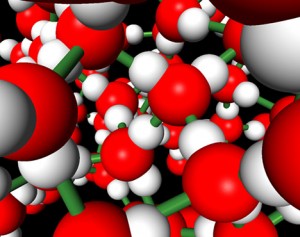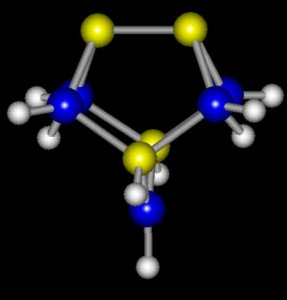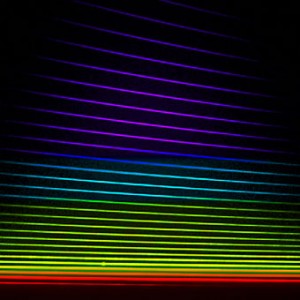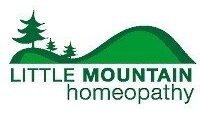The Dilutions and Memory of Water Theory

Homeopathic medicines are often diluted to the point where there may be no molecules of original substance left. One of the leading current proposals for how such ‘ultramolecular’ dilutions work is that water is capable of storing information relating to substances with which it has previously been in contact.1
The structure of water
Recent research on hydrogen bonds in water provides some support for this ‘memory’ theory. The Swiss chemist, Louis Rey, found that the structure of hydrogen bonds in homeopathic dilutions of salt solutions is very different from that in pure water.2 He reached the conclusion that the phenomenon results from the vigorous shaking of solutions that takes place during homeopathic ‘succussion’. Moreover, using the laboratory technique called spectroscopy, other researchers have found that different homeopathic medicines and different dilutions of the same medicine can be distinguished from each other, even though all should contain nothing but water.3
Molecular clusters

An alternative mechanism is suggested by the results of research from South Korea. Studies on molecular clustering in water solutions showed that as a solution is made more and more dilute, very stable and larger ‘clumps’ of material develop in dilute solutions rather than in more concentrated solutions.4 This means that residual molecular clusters of the original substance might just be present in homeopathic dilutions. Succussion might also be responsible for creating very tiny bubbles (nanobubbles) that could contain gaseous inclusions of oxygen, nitrogen, carbon dioxide and possibly the homeopathic source material.3
Highly Diluted Substances Exert an Effect
There is increasing evidence that homeopathic dilutions have a demonstrable effect on living organisms examined under laboratory conditions. Researchers in Germany have observed an inhibitory effect of an ultra-diluted chemical on the bacterium Vibrio fischeri.5 And there is important work from a consortium of European laboratories showing that very high dilutions of histamine may exert a biologically significant effect on the white blood cells that take part in the immune response.6
Positive outcomes in 75% of studies

Viewing the evidence overall, there is experimental support for the idea that ultra-molecular homeopathic dilutions possess unique physical properties and can exert physiological effects. A systematic review evaluated 67 in-vitro experiments in 75 publications of research on homeopathic dilutions.7 A majority of papers reported measurable effects from highly diluted substances. Positive findings were obtained in nearly three-quarters of all replicated studies.
Two studies published in 2009 by 2008 Nobel Prize winner Luc Montagnier proves that homeopathic remedies are active
Professor Luc Montagnier is a French virologist and joint recipient of the 2008 Nobel Prize in Physiology or Medicine for his co-discovery of the Human Immunodeficiency Virus (HIV). He and his team of researchers have been doing rigorous experiments (8, 9) using homeopathically prepared biological substances. They have conclusively shown that homeopathically prepared biological substances give off electromagnetic waves and therefore have effects. Read more about Professor Montagnier’s work on the Homeopathy Resource blog or on Dana Ullman’s blog.
New 2010 Study by Chikramane et al. Demonstrates the Presence of Physical Entities in Homeopathic Dilutions
Homeopathy is controversial because medicines in high potencies such as 30c and 200c involve huge dilution factors (10⁶⁰ and 10⁴⁰⁰ respectively) which are many orders of magnitude greater than Avogadro’s number, so that theoretically there should be no measurable remnants of the starting materials. Using market samples of metal-derived medicines from reputable manufacturers, it has been demonstrated by Transmission Electron Microscopy (TEM), electron diffraction and chemical analysis by Inductively Coupled Plasma-Atomic Emission Spectroscopy (ICP-AES), the presence of physical entities in these extreme dilutions, in the form of nanoparticles of the starting metals and their aggregates. (10)
Nobel Laureate Gives Homeopathy a Boost

In the summer of 2010, Montagnier stunned his colleagues at a prestigious international conference when he presented a new method for detecting viral infections that bore close parallels to the basic tenets of homeopathy.
Montagnier told the conference that solutions containing the DNA of pathogenic bacteria and viruses, including HIV, “could emit low frequency radio waves” that induced surrounding water molecules to become arranged into “nanostructures”. These water molecules, he said, could also emit radio waves.
He suggested water could retain such properties even after the original solutions were massively diluted, to the point where the original DNA had effectively vanished. In this way, he suggested, water could retain the “memory” of substances with which it had been in contact — and doctors could use the emissions to detect disease.
For more information about how homeopathic medicines work, read Dana Ullman’s article: How Homeopathic Medicines Work: Nanopharmacology at its Best
References
1. Bellavite P, Signorini A. The Emerging Science of Homeopathy, 2e. 2002: North Atlantic, Berkeley.
2. Rey L. Thermoluminescence of ultra-high dilutions of lithium chloride and sodium chloride. Physica A, 2003; 323: 67–74.
3. Rao ML, Roy R, Bell IR, Hoover R. The defining role of structure (including epitaxy) in the plausibility of homeopathy. Homeopathy, 2007; 96: 175–183.
4. Samal S, Geckeler KE. Unexpected solute aggregation in water on dilution. Chem Commun, 2001; 21: 2224–2225.
5. Brack A, Strube J, Stolz P, Decker H. Effects of ultrahigh dilutions of 3,5-dichlorophenol on the luminescence of the bacterium Vibrio fischeri. Biochim Biophys Acta, 2003; 1621: 253–260.
6. Belon P, Cumps J, Ennis M, et al. Histamine dilutions modulate basophil activation. Inflamm Res, 2004; 53: 181–188.
7. Witt CM, Bluth M, Albrecht H, et al. The in vitro evidence for an effect of high homeopathic potencies – a systematic review of the literature. Complementary Therapies in Medicine, 2007; 15: 128–138.
8. Montagnier L, Aïssa J, Ferris S, Montagnier JL, Lavallée C. Electromagnetic signals are produced by aqueous nanostructures derived from bacterial DNA sequences. Interdiscip Sci. 2009 Jun;1(2):81-90. Epub 2009 Mar 4.
9. Montagnier L, Aïssa J, Lavallée C, Mbamy M, Varon J, Chenal H. Electromagnetic detection of HIV DNA in the blood of AIDS patients treated by antiretroviral therapy. Interdiscip Sci. 2009 Dec;1(4):245-53. Epub 2009 Nov 14.
10. Chikramane PS, Suresh AK, Bellare JR, Kane SG. Extreme homeopathic dilutions retain starting materials: A nanoparticulate perspective. Homeopathy. 2010 Oct;99(4):231-42.
11. Nobel Laureate Gives Homeopathy a Boost. The Australian Sunday Times. July 5, 2010.

